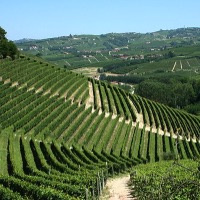Predictive phytotoxic value of water-soluble allelochemicals in plant extracts for choosing a cover crop or mulch for specific weed control

Accepted: 9 July 2021
HTML: 31
All claims expressed in this article are solely those of the authors and do not necessarily represent those of their affiliated organizations, or those of the publisher, the editors and the reviewers. Any product that may be evaluated in this article or claim that may be made by its manufacturer is not guaranteed or endorsed by the publisher.
Cover crops and mulches have become an alternative for soil management in vineyards due to the agronomic, environmental, and economic advantages, especially the possibility of weed control. Implicitly to this objective lies the idea of assessing the potential herbicide effect of the allelochemicals released by different cover crops and mulch species. With this objective, the present work evaluated the phytotoxic effects of 12 aqueous extracts of selected species with potential use as a cover crop or mulch: a Bromus species mixture (B. hordeaceus L. and B. rubens L.), Festuca arundinacea Schreb., Hordeum murinum L., H. vulgare L., Vulpia ciliata Dumort., Medicago rugosa Desr., M. sativa L., Trifolium subterraneum L., T. incarnatum L., Phacelia tanacetifolia Benth., Sinapis alba L., and Pinus sylvestris L., on the germination and early growth of three troublesome weeds (Conyza bonariensis (L.) Cronquist, Aster squamatus (Spreng.) Hieron, and Bassia scoparia (L.) A. J.). The different in vitro bioassays showed that aqueous extracts of some species significantly inhibited or reduced germination and root and shoot growth of the target weed species in a dose-response manner. Germination of A. squamatus and C. bonariensis was reduced by 100-80% by the different extracts applied at 50% concentration and completely blocked at 100% concentration, except for M. rugosa extract, to which both species showed less sensitivity. Root elongation of A. squamatus was inhibited under every extract and concentration, whereas C. bonariensis root growth showed only some tolerance to the crude extracts of F. arundinacea and P. sylvestris. Bassia scoparia was relatively tolerant to the aqueous plant extracts, except for T. subterraneum crude extract, which reduced total germination by 80%; otherwise, B. scoparia showed higher general sensitivity of shoot growth than the other two weed species. The chemical profiles of phenolic compounds of the aqueous extracts were obtained and identified by HPLC-DAD, the phenolic profiles of H. murinum, V. ciliata, and M. rugosa being reported in this work for the first time. Using stepwise regression, the influence of certain phenolic compounds from the aqueous extracts on the germination and early growth of weeds was predicted. Among other significant compounds, the flavonoid naringenin identified in T. subterraneum aqueous extract at 8.09 μg·mL–1 was predicted to underlie its specific phytotoxicity on B. scoparia germination. These results support the use of cover crops and mulches in weed management and can help to select the most suitable species to adopt according to the target weed species.
Highlights
- The phytotoxic nature of the aqueous extracts of twelve conventional and novel cover crops and mulch species was demonstrated in vineyards’ three troublesome weed species.
- Phenolic acids and flavonoids of the twelve aqueous extracts were identified and quantified by HPLC-DAD, and, by regression analysis, some allelochemicals were postulated as responsible for the phytotoxic effects.
- The water-soluble phenolic profiles of three potential cover crops, namely Hordeum murinum, Vulpia ciliata, and Medicago rugosa, are reported for the first time.
- In vitro germination and early root growth of Conyza bonariensis and Aster squamatus were almost entirely restricted by any of the twelve plants’ aqueous extracts and presumably by the joint action of their particular allelopathic compounds.
- Bassia scoparia germination was relatively much less sensitive to the extracts, except for Trifolium subterraneum, for which the flavonoid naringenin was predicted to underlie its specific phytotoxicity.
How to Cite

This work is licensed under a Creative Commons Attribution-NonCommercial 4.0 International License.
PAGEPress has chosen to apply the Creative Commons Attribution NonCommercial 4.0 International License (CC BY-NC 4.0) to all manuscripts to be published.

 https://doi.org/10.4081/ija.2021.1872
https://doi.org/10.4081/ija.2021.1872



